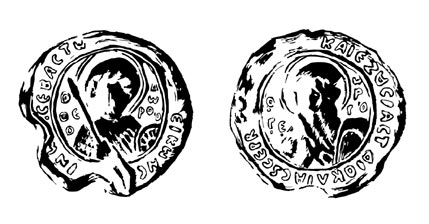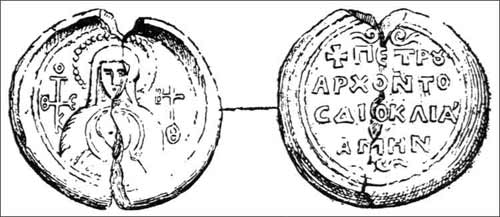|
List Of People From Serbia
List of people from Serbia is a list of notable people from Serbia. The list contains names of people who are associated with Serbia and its territory by their place of birth, and also by naturalization, domicile, citizenship or some other similar connection, modern or historical. List is territorially defined, and includes all people from Serbia, regardless of their ethnic, linguistic, religious or some other personal distinctions. Royalty and nobility Serbian monarchs *Unknown Archon *Višeslav *Radoslav *Prosigoj *Vlastimir *Mutimir * Pribislav *Petar *Pavle *Zaharija * Časlav *Beloje *Krajina Belojević *Hvalimir Belojević *Čučimir Belojević *Petar of Duklja *Jovan Vladimir *Stefan Vojislav *Mihailo Vojislavljević *Constantine Bodin * Vukan * Uroš I *Uroš II *Beloš * Desa * Tihomir *Stefan Nemanja *Vukan Nemanjić *Stefan the First-Crowned *Stefan Radoslav *Stefan Vladislav *Stefan Uroš I *Stefan Dragutin *Stefan Milutin *Vladislav, King of Syrmia *Stefan ... [...More Info...] [...Related Items...] OR: [Wikipedia] [Google] [Baidu] |
Lists By Country
This is a series of lists by country. The lists generally cover topics related to sovereign countries; however, states with limited recognition are also included. Topical country articles Main articles # * Administrative divisions * Politics Others * Current heads of state and government * Election results * Flags * Intelligence agencies * Legislatures * Militaries * National anthems * National capitals * National constitutions * National emblems * National governments * National mottos * Office-holders * Political parties * System of government Topics sorted by country * Airlines * Area * Battles * Cathedrals * Cemeteries * Cities * Education * Emergency contraception * Islands * Maps * Metro systems * Monorail systems * Music genres * National parks * Newspapers * Nobel laureates * Novelists * Official languages * People * Population * Pornography * Prostitution * Rail transport * Railway companies * Religions * Schools * Suburban and commuter rail systems * Tel ... [...More Info...] [...Related Items...] OR: [Wikipedia] [Google] [Baidu] |
Pribislav Of Serbia
Pribislav ( sr, Прибислав, gr, Πριβέσθλαβος) was Prince of the Serbs for a year, in 891–892, before being deposed by his cousin Petar. He was the eldest son of Mutimir (r. 851–891) of the Vlastimirović dynasty, who ruled during the expanding and Christianization of Serbia. Life His father had with his brothers Strojimir and Gojnik, defeated the Bulgar Army sent by ''Tsar'' Boris I of Bulgaria and led by his son Vladimir.''The early medieval Balkans''p. 141/ref> Vladimir was captured together with 12 boyars. Boris I and Mutimir agreed on peace (and perhaps an alliance), and Mutimir sent his sons Bran and Stefan beyond the border to escort the prisoners, where they exchanged items as a sign of peace: Boris himself gave them "rich gifts", while he was given "two slaves, two falcons, two dogs, and eighty furs". In the 880s, Mutimir seized the throne, exiling his younger brothers and Klonimir, Strojimir's son, to the court of Boris I in the Bulgar Kha ... [...More Info...] [...Related Items...] OR: [Wikipedia] [Google] [Baidu] |
Constantine Bodin
Constantine Bodin (Bulgarian and sr, italic=no, Константин Бодин, ''Konstantin Bodin''; 1072–1101) was a medieval king and the ruler of Duklja, the most powerful Serbian principality of the time, from 1081 to 1101, succeeding his father, Mihailo Vojislavljević ( 1046–1081). Born in peaceful times, when the Southern Slavs were subjects of the Byzantine Empire, his father was in 1072 approached by Bulgarian nobility, who sought aid in their revolt against the Byzantines; Mihailo sent them Bodin, who was crowned Bulgarian tsar under the name Petar III ( bg, Петър ІІІ, ''Petŭr III'') joined the short-lived revolt, being captured the following year after initial success. He was freed in 1078, and upon the death of his father in 1081 he succeeded to the throne of Dioclea. Having renewed his acknowledgement of Byzantine overlordship, he soon sided with their enemies, the Normans, which resulted in a Byzantine invasion and his capture. Although he quic ... [...More Info...] [...Related Items...] OR: [Wikipedia] [Google] [Baidu] |
Mihailo Vojislavljević
Mihailo Vojislavljević ( sr-cyr, Михаило Војислављевић) was a medieval Serbian king and the ruler of Dioclea (Duklja), from 1046 to 1081 initially as a Byzantine vassal holding the title of ''protospatharios'', then after 1077 as nominally serving Pope Gregory VII, addressed as "King of the Slavs". He had alienated himself from the Byzantines when he supported a Bulgarian Uprising of Georgi Voyteh, after which he then sought to gain support in the West. In 1077 he received a royal insignia by Gregory VII in the aftermath of the Church schism of 1054. Life Early rule With the death of Stefan Vojislav, his dominion was divided among his five sons (according to CPD). Gojislav received Travunia (Trebinje) ruled briefly until he was killed by local nobles, who set up Domanek in his place. Mihailo expelled him and Saganek chosen to rule, but Domanek returned and drove him out. Mihailo offered the office to Radoslav, who declined, afraid of losing Luška župa ( ... [...More Info...] [...Related Items...] OR: [Wikipedia] [Google] [Baidu] |
Stefan Vojislav
Stefan Vojislav ( sr-cyr, Стефан Војислав; gr, Στέφανος Βοϊσθλάβος; 1034–d. 1043) was the Prince of Duklja from 1040 to 1043. Beginning in the year 1018, he served as a Byzantine governor, until 1034 when he led an unsuccessful revolt that landed him in a prison at Constantinople. He managed to escape and returned home, this time successfully gaining the independence of his statelet and expanding his rule over southern Dalmatia and its hinterland. He is the eponymous founder of the Vojislavljević dynasty. Origin and early life The contemporary Byzantine writers call him either a Serb or a Dukljan (''Βοϊσθλάβος ὁ Διοκλητιανός)'', but do not mention his genealogy, while the ''Chronicle of the Priest of Duklja'', a posterior, more dubious source, calls him a cousin to previous ruler Jovan Vladimir (r. 990–1016).Živković 2006, "Стефан Војислав". Having reached its pinnacle during the long reign of emperor ... [...More Info...] [...Related Items...] OR: [Wikipedia] [Google] [Baidu] |
Jovan Vladimir
Jovan Vladimir or John Vladimir ( sr-cyr, Јован Владимир; c. 990 – 22 May 1016) was the ruler of Duklja, the most powerful Serbian principality of the time, from around 1000 to 1016. He ruled during the protracted war between the Byzantine Empire and the Bulgarian Empire. Vladimir was acknowledged as a pious, just, and peaceful ruler. He is recognized as a martyr and saint, with his feast day being celebrated on 22 May. Jovan Vladimir had a close relationship with Byzantium but this did not save Duklja from the expansionist Tsar Samuel of Bulgaria, who conquered the principality around 1010 and took Vladimir prisoner. A medieval chronicle asserts that Samuel's daughter, Theodora Kosara, fell in love with Vladimir and begged her father for his hand. The tsar allowed the marriage and returned Duklja to Vladimir, who ruled as his vassal. Vladimir took no part in his father-in-law's war efforts. The warfare culminated with Tsar Samuel's defeat by the Byzantines ... [...More Info...] [...Related Items...] OR: [Wikipedia] [Google] [Baidu] |
Petar Of Duklja
Peter of Diokleia or Petar ( sr, Петaр/Petar) was an ''archon'' of Duklja in the 10th century. The only information on him is from a seal found in the 19th century, which is decorated on the observe with a bust of the Virgin Mary holding a medallion of Christ and flanked by two cruciform invocative monograms. The text is in Greek letters, saying ΠΕΤΡ �� ΑΡΧΟΝΤΟΣ ΔΙΟΚΛ ��Α �ΑΜΗΝ (''Petr , Archontos Diokl as, Amen''), i.e. " ealof Peter, archon of Duklja, Amen". The seal shows that although Duklja underwent turmoil in the 9th century, the region still continued under Byzantine rule or at least cultural influence. The stamp was kept in the Medal cabinet of Berlin and before 1884 it was in a decayed condition. Illustration based on the original by ''Léon Dardel'', was first published in 1884 by Gustave Schlumberger. The history of Duklja until the 10th century is little known.''The former Yugoslavia's diverse peoples: a reference sourcebook''p. 24 A list of ... [...More Info...] [...Related Items...] OR: [Wikipedia] [Google] [Baidu] |
Čučimir Belojević
The Travunian dynasty, or the Belojević' dynasty ( sr-cyrl, Белојевић), was the Serbian ruling family of Travunia, that served the first Serbian Principality under the Vlastimirović dynasty. The progenitor, Beloje, was mentioned as the ''župan'' of Travunia in the chapter on the Serbs in '' De Administrando Imperio'' () of Byzantine Emperor Constantine VII (r. 945–959). Prince Vlastimir (r. 836–851) married his daughter to Beloje's son Krajina, and elevated him to the rank of ''archon'', some time prior the Bulgar–Serb War (839–842).Veselinovic, p. 24 Krajina's descendants were entitled the rule of Travunia under Serbian suzerainty. They ruled the hinterland of Dubrovnik and Boka Kotorska, with seat at Trebinje.Radonjić, pp. 109-110 The family is mentioned after DAI in the Chronicle of the Priest of Duklja, documenting that a descendant of Hvalimir, Dragomir rules Travunija in the latter half of the 10th century, his brother Petrislav ruling Duklja and his so ... [...More Info...] [...Related Items...] OR: [Wikipedia] [Google] [Baidu] |
Hvalimir Belojević
The Travunian dynasty, or the Belojević' dynasty ( sr-cyrl, Белојевић), was the Serbian ruling family of Travunia, that served the first Serbian Principality under the Vlastimirović dynasty. The progenitor, Beloje, was mentioned as the ''župan'' of Travunia in the chapter on the Serbs in '' De Administrando Imperio'' () of Byzantine Emperor Constantine VII (r. 945–959). Prince Vlastimir (r. 836–851) married his daughter to Beloje's son Krajina, and elevated him to the rank of ''archon'', some time prior the Bulgar–Serb War (839–842).Veselinovic, p. 24 Krajina's descendants were entitled the rule of Travunia under Serbian suzerainty. They ruled the hinterland of Dubrovnik and Boka Kotorska, with seat at Trebinje.Radonjić, pp. 109-110 The family is mentioned after DAI in the Chronicle of the Priest of Duklja, documenting that a descendant of Hvalimir, Dragomir rules Travunija in the latter half of the 10th century, his brother Petrislav ruling Duklja and his so ... [...More Info...] [...Related Items...] OR: [Wikipedia] [Google] [Baidu] |
Krajina Belojević
Krajina Belojević ( sr, Крајина, gr, Κράινα) was the Serbian ''župan'' of Travunia, an administrative unit of the Principality of Serbia, in the 9th century. In 847/848, not long after the three-year Bulgarian–Serbian War (839–842) in which Prince Vlastimir of Serbia (r. ca. 836-850) defeated the Bulgar army sent by Presian I, Krajina married the daughter of Prince Vlastimir and gained a raising in rank, and was entitled the ''županate'' centered on Trebinje (a province in the "maritime", ''Pomorje'', part of modern Herzegovina), which had earlier been held by Krajina's father, the local lord Beloje.Ferjančić, p. 62 His father-in-law was the eponymous founder of the Vlastimirović dynasty, which would rule Serbia until 969. Krajina continued the office under Mutimir (r. 850–891). With the unnamed daughter of Vlastimir, Krajina had a son that would succeed him, Hvalimir ( gr, Φαλιμἑρης"Sebraneʹ spisy"p. 759/ref>). Hvalimir in turn had a son, ... [...More Info...] [...Related Items...] OR: [Wikipedia] [Google] [Baidu] |
Beloje
Beloje ( sr-cyrl, Белоје; gr, Βελάης; 839) was the Serbian ''župan'' of Travunia some time in the first half of the 9th century. Travunia was a polity centered in Trebinje (now in southern Bosnia and Herzegovina), subject to the Principality of Serbia. Mentioned in ''De Administrando Imperio'' () of Byzantine Emperor Constantine VII (r. 945–959), Beloje was a contemporary of Serbian ruler Vlastimir (r. 836–851). It is unknown how he came to the position; it might have been through the primogeniture principles, however, there is no definite answer. Vlastimir married his daughter to Beloje's son Krajina, and "desiring to ennoble his son-in-law", elevated his rank to ''archon'' (prince) and made him independent. Travunia was thus elevated from a ''župa'' into an ''archonty'' (principality), practically independent, while Vlastimir oversaw his son-in-law. T. Živković theorized that Beloje sought to free himself of Serbian rule, and that Vlastimir prevented this thr ... [...More Info...] [...Related Items...] OR: [Wikipedia] [Google] [Baidu] |


_02.jpg)


